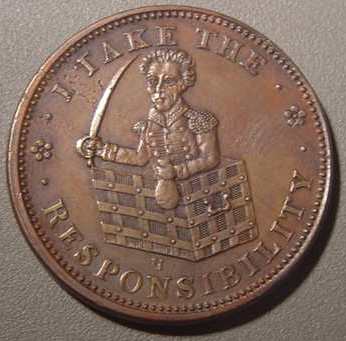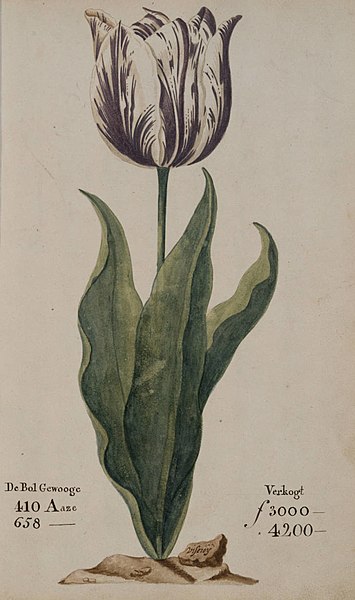NFT

WTF is an NFT?
Non Fungible Token (NFT) is an assertion of owning a specific copy of a pile of bits, often being a media file (images, audio, video, etc).
That has been the crux of what it is and the jokes about still not understanding them. There are a lot of reasons to not understand NFTs. I’ll be honest, I understand the technology behind them and the economics that potentially drive their value. Even with all of that understanding I still have problems conceiving of why anyone would value them as they are used today. I’m going to break it down here and hopefully help myself by thinking out loud. If it helps you also, great.
Technical
An NFT relies on a blockchain. Blockchains are mathematical structures that lets a crowd verify transactions have occurred without a central authority. This is really a cool concept. I can execute a contract on the blockchain with another party and the blockchain is essentially signatures and notary service rolled up in one. This has the power to change how we handle contracts, property, insurance and employment in the near future and the hype around these is only at a lite simmer of where it could end up.
Most people know blockchain in relation to crypto currencies like Bitcoin. That is only one application and the most over-hyped of them. It was originally considered to be anonymous by the lay public, but it isn’t. All transactions are public for all time. Anonymity requires laundering like procedures that may be easier and more effective in the crypto currency world, but by itself it is far from anonymous. Crypto currencies may have some use as an international fiat currency, but only time will tell.
On the blockchains any party can put a small number of bits in a transaction and ensure that those bits and the transaction are recorded forever in a way that can’t be altered later. The number of bits used is normally the output of a hash function like SHA256 and/or a digital signature (which may also use something like SHA256). This can range from 256 bits up to a few thousand. Bitcoin allows for larger sizes (and may be carrying child porn that is irremovable, scary) but in general most users can just use a cryptographic hash to represent something that they hold external to the blockchain, especially if they don’t want anyone to know what it is, but need to verify that they have it and it matches later.
An NFT is a digital file that has been sold to a buyer and the proof of the transaction and ownership is encoded in a transaction on a blockchain. Kind of like buying real estate is recorded by the county. That file can be an image, music, a video clip, or even a chunk of code. Anyone can then verify in the blockchain that user ID1 sold it to user ID2. As the sales go on the chain of custody is documented for the whole world to see.
Value
This is where things get a little murky. Why does it have value?
Digital files are the most fungible thing ever created by mankind. I can make a perfect copy at almost no cost and I can make perfect copies forever with out degrading or deviating from the original copy by one bit. In theory digital files should be worthless by that very concept.
We all know though that there is a concept of intellectual property. Here in the US it was created by our constitution to spur innovation by granting exclusive rights for a limited time to the creator of new intellectual property. Patents and copyrights protect the right of the creator to make money with the assumption that it will help all of mankind and eventually be free to the public in exchange. This whole area can be discussed at length and I’m not going there now.
We can’t copy digital information without the owner’s permission because it might reduce the value to them. While it doesn’t cost them anything directly, the lost potential sale cost them revenue in the future. So copyrighted material, like songs and movies are protected by law from being copied for a limited time after they are created.
NFTs are those same protected digital files, but in this case a specific copy of the file. Looking at a file you can’t tell one copy from another, but the transaction on the blockchain means that one copy of the file traded hands and all future trades of that one copy refer back to the original transaction. That chain makes the one you pay for guaranteed to be the one and only version of that copy.
Economics tells us that scarcity and demand drive value. If I have the only “copy” of that file and one or more other people want it, it has a value. The value is driven by what they are willing to pay for it and what I am willing to sell it for. You can go to school for a long time to understand that concept, but I think we can stick with this simple version.
Problem
Ok, so we have some concepts and some problems. Before I dive into those I would like to conduct a thought experiment.
I will create a digital file with a single bit set to 1. What does it mean to own that? Anyone can create a single bit set to 1. You are probably already thinking of creating a bit set to 0 could be made later in the day. Can you own a bit set to 1? No. It occurs naturally in everyday life. Can it have value? No, it exists without effort and we all swim in them all day long.
What if I set a byte to 1? There are 256 potential values to that byte. Any of us can create all the possible bytes in a short sitting. Do any of those bytes have value? No for the same reason neither bit did.
I can extend this through machine words. On a 32 bit machine those 4 billion different values happen all the time around us. Even 64 bit words are not of value. While I can’t easily create all the values and store them, they are easy and common to come up with any one of them. The same thing happens with human words.
When we start stringing those concepts of the thought experiment above together we find that short collections still hold no value, but we don’t have to go far before we get into collections of bits that are essentially novel. While I could randomly generate those same bits, I am unlikely to be able to do that without effort to find them and isolate them because they are more important than other random collections. That concept is where digital files go from being a number to something with value and gets protection in law.
So that’s how a digital file can have value, but how does a single copy of that file have value? The creator could make it the only copy ever and enforce that. Being the only person with that image could make it worth more like art. Even if the creator numbered them and only sold say 1000, there is a limited set to trade and the creator applying a serial number changes the value and makes a small set of files, each being unique as if the number was appended on the end of each copied file.
Now if you had art as a poster you may ask what is the difference between the copy you bought at the mall and the original that was sold at auction. In the case of art the originals are of higher quality as the mass production is inherently noisy. The key here is this, is the mass production good enough for you to enjoy it? Would you enjoy the quality of the original more?
For the digital file there is no lost quality ever. You can’t enjoy the original more than the copy. In many cases the art owners don’t enjoy their originals more than a high quality copy, but they can value that the artist touched/created it. In actuality what they really value is that they have something that others can’t.
The actual digital file is just a symbol not the value. When the first tweet was sold any of us could have read it, copied it or ignored it for years beforehand. We still can do all that. The buyer of that NFT just gets the bragging rights of saying he made a transaction for that tweet. That tweet can be sold again, but it would essentially be serial numbered by the time order. That original sale is unique and that transaction can be sold again as a clear chain of ownership.
So NFTs are essentially bragging rights around some digital content. If I buy the original code for the world wide web as an NFT it doesn’t mean no one else can download the code and compile it (if they still can). I couldn’t even claim ownership of the intellectual property in the copies. That would be buying the IP of the content which is a much more traditional contract transaction.
So an NFT is bragging rights. It obviously has value given that there are buyers for a scarce resource that sellers also value. I guess the biggest problem in my brain is “Should anyone value it?”
Let’s compare it to shaking a celebrities hand. That is exciting for some people. You still hear people joke about not washing their hand as the value my dilute, but we all know that is absurd. The experience is what you value, along with describing the experience to others for years to come. Now an NFT is more like the dead skin cells that you jokingly won’t wash off because there was no experience of meeting anyone in many of these purchases. The experience was somewhat sterile and most likely at the computer the same way you would buy a book on Amazon (did you know they sold books?)
So the value is built on top of concepts to support the primary one. Each of the concepts is a little shaky at best, but will hold value if a large enough population says it will. I don’t know about you but any one of them could change in public opinion and destroy the value of NFTs in a moment. Maybe you value your ownership, but if there are no buyers it has no monetary value past your sentimental value.
Is it a scam?

No, I don’t think it’s a scam. Maybe some specific NFTs and NFT markets are, but the concept of NFTs are not a scam. No they are tulips.
In the 1630s there was a Dutch market hysteria for tulip bulbs. Some of them were going for 10 years of a craftsmen salary. The problem was that they really weren’t rare. People could grow them and flood the market. While it took a little time to increase inventory (by either growing them or shipping more in), the novelty made people pay absurd amounts for a flower until February of 1637 when the market collapsed and prices approached the cost of cultivating a plant.
Before the collapse, tulip futures were sold and many people spent fortunes having never seen or held the tulips in question. In some cases one or more of the parties may have never actually seen a tulip! The contracts themselves became valuable enough that they were traded independent of the flower they represented.
While we have many derivative monetary insturments today, tulip contracts actually have more real value than an NFT as you could excercise them for a bulb that would grow a flower in your garden. Try that with an NFT and the closest you may get will look like this.
